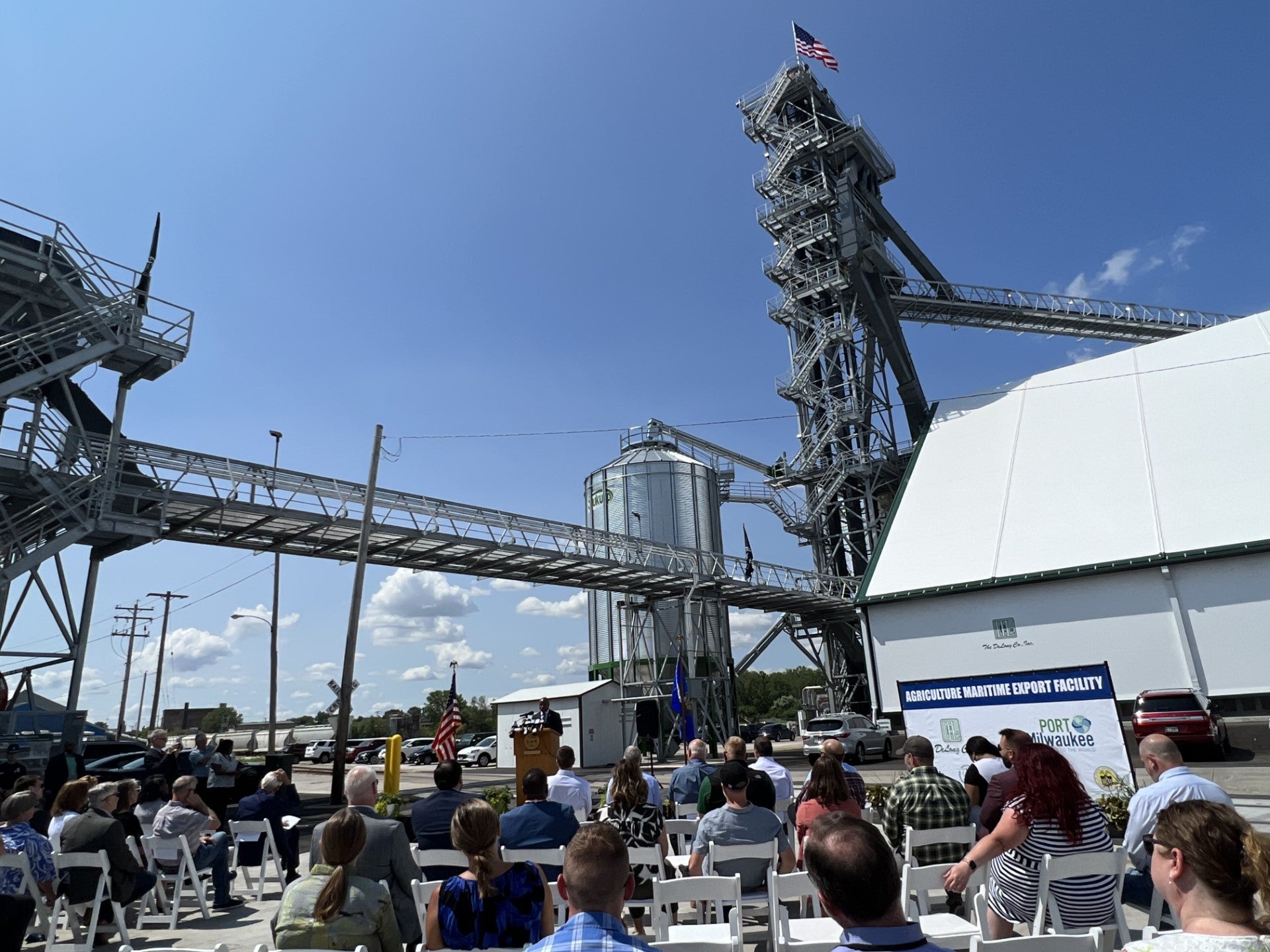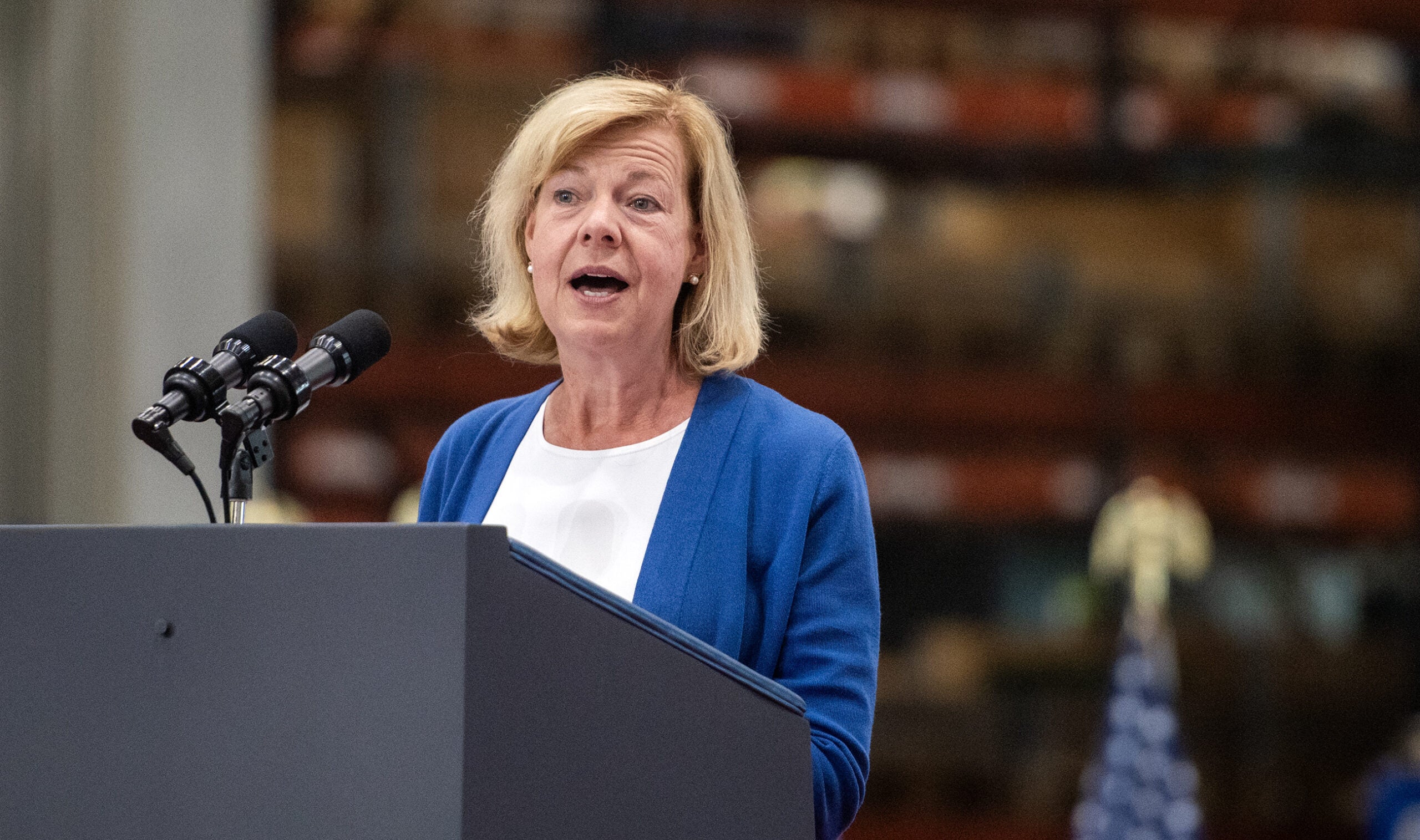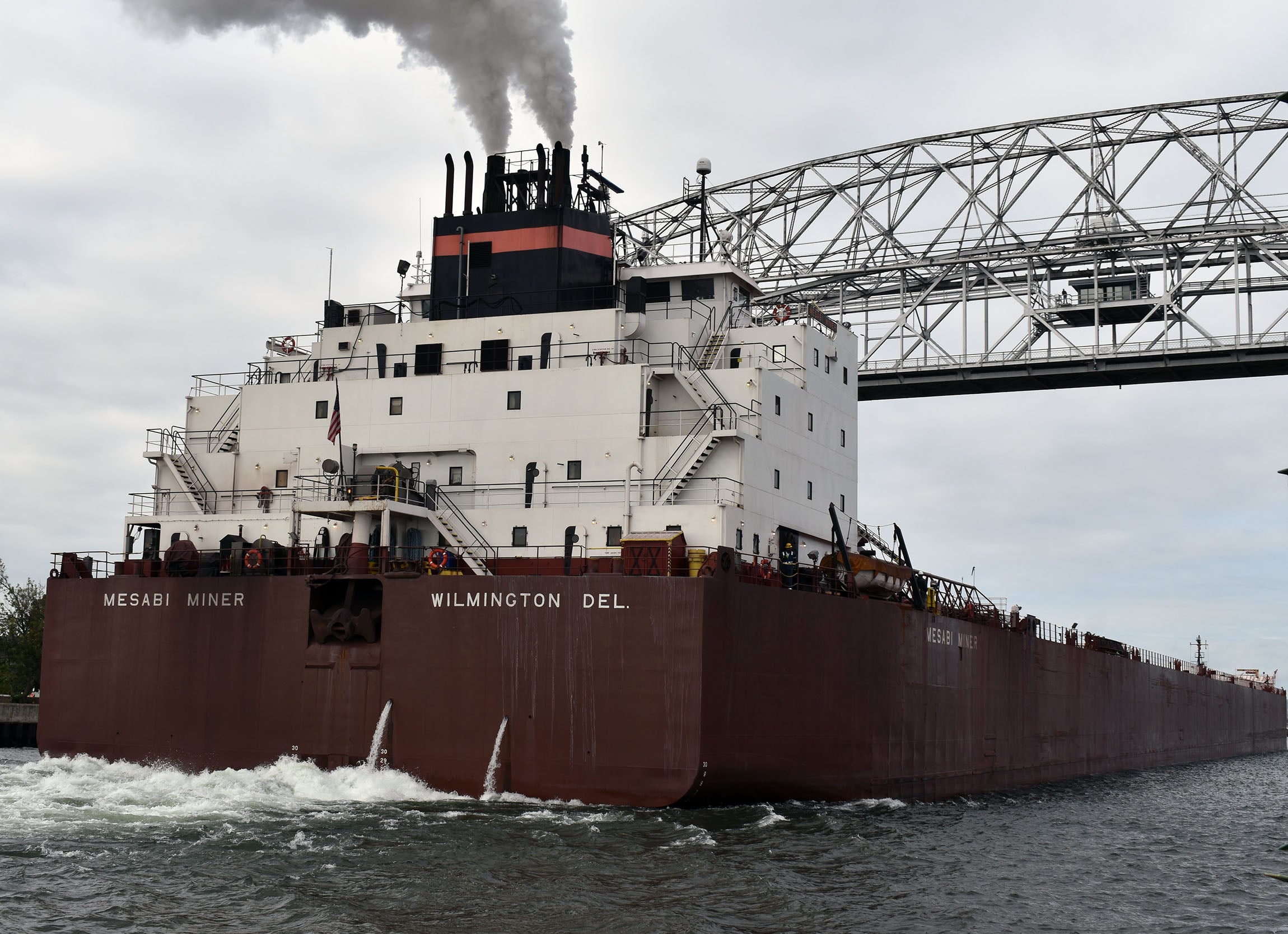A new shipping facility for agricultural products — expected to generate $63 million in statewide economic impact each year — officially opened in Port Milwaukee Tuesday.
The $40 million Agricultural Maritime Export Facility is one of the first facilities in the Great Lakes-St. Lawrence Seaway to move bulk agricultural exports, including dried distillers grains — a byproduct from beer and ethanol production that is used in livestock feed — through intermodal transportation. Instead of sending products down the Mississippi River, Wisconsin farmers and businesses can now send their products by truck or rail directly to the facility where they will be loaded onto international shipping vessels.
“This new facility will have a tremendous impact here and around the state,” Gov. Tony Evers said during a ribbon cutting ceremony Tuesday.
News with a little more humanity
WPR’s “Wisconsin Today” newsletter keeps you connected to the state you love without feeling overwhelmed. No paywall. No agenda. No corporate filter.
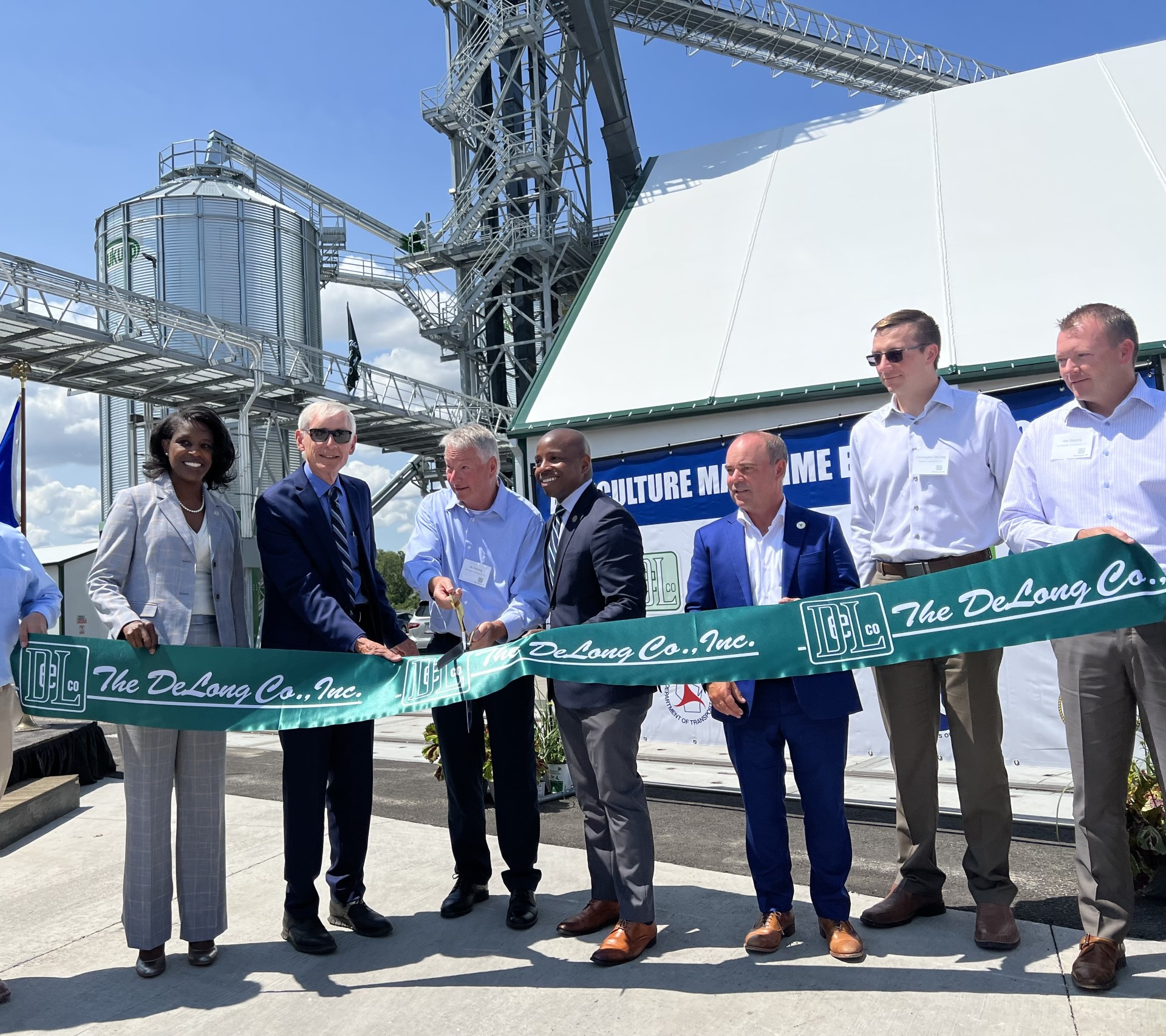
Local, state and federal officials are hopeful the project will create jobs and grow the regional economy. Evers said he believes the facility, which will be operated by Clinton-based agricultural supplier The DeLong Co., will benefit farmers and the agriculture industry for years to come.
“This project has been a win for local jobs, both during the construction process and now to keep this multi-million dollar facility up and running,” Evers said. “This new facility is a win for the state and local economy as well. It will generate tens of millions of dollars in statewide economic impact each and every year.”
The DeLong Co. helped develop the new facility, which began construction in 2021 on Jones Island. The public-private partnership is the largest one-time investment in Port Milwaukee since the 1950s. The project was funded by a federal grant from the U.S. Department of Transportation, private funds from The DeLong Company, grants from the Wisconsin Department of Transportation and funds from Port Milwaukee.
Port Milwaukee Director Jackie Q. Carter said she’s excited the facility will allow the port to export more agricultural goods, which will be brought to the port, stored in there and then shipped out to markets across the globe on vessels and barges.
“We’re proud that we can say that Milwaukee has, right here in our city, a great resource for growers and producers all across this region to be able to get those products to those markets where they’re needed,” Carter said.
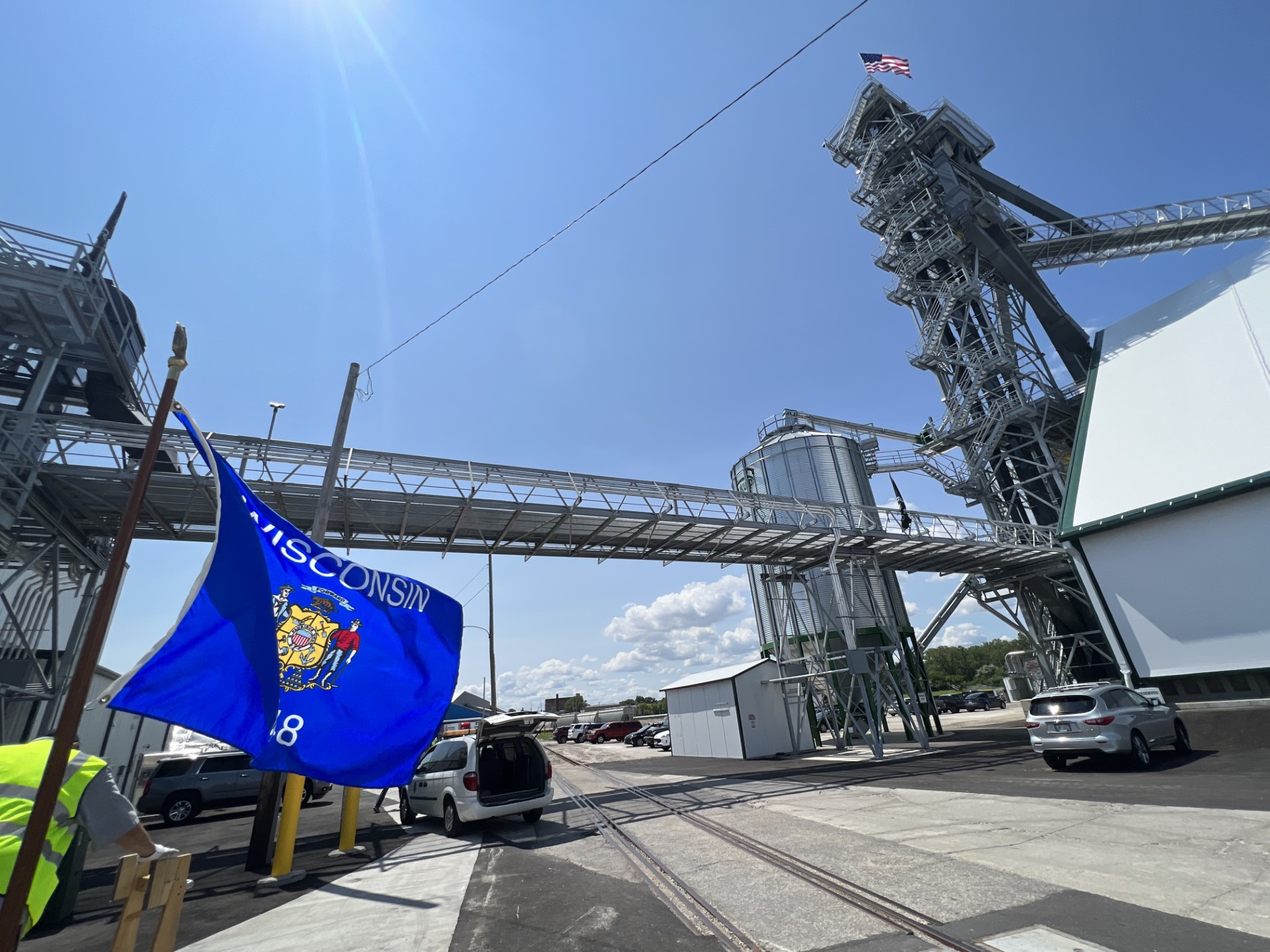
The facility will primarily handle dried distillers grains and other grains and feedstuffs from across the state and the Midwest. It can store 30,000 metric tons of dried distillers grains, or 45,000 metric tons of soybeans. Dried distillers grains are a major coproduct from the production of ethanol from grain, according to the United States Department of Agriculture. They’re typically used as animal feed.
The DeLong Co. moves about $1 billion worth of agricultural exports annually and will now be able to do that directly from Wisconsin, while reaching new markets in Europe and northern Africa. Prior to the opening of the facility, only partial vessels of feedstuffs could be loaded onto the Great Lakes.
Carter anticipates the facility will increase tonnage moving through the port by about 400,000 metric tons.The port handled about 2.3 million metric tons last year, which was down about 5 percent from its five-year average.
Milwaukee Mayor Cavalier Johnson said the project will benefit both the region and the state’s economy.
“Now, Wisconsin’s agriculture industry will have a new resource, right here in Milwaukee, to move their products not just around the state, but to markets around the entire globe,” Johnson said.
Wisconsin Department of Transportation Secretary Craig Thompson said Port Milwaukee is the third-largest exporter of grain on the Great Lakes.
“The export facility that we’re opening here today will expand that impact even further,” Thompson said. “This is an important new resource for both shipping and agriculture, and its impact will be felt statewide.”
Wisconsin Public Radio, © Copyright 2025, Board of Regents of the University of Wisconsin System and Wisconsin Educational Communications Board.

